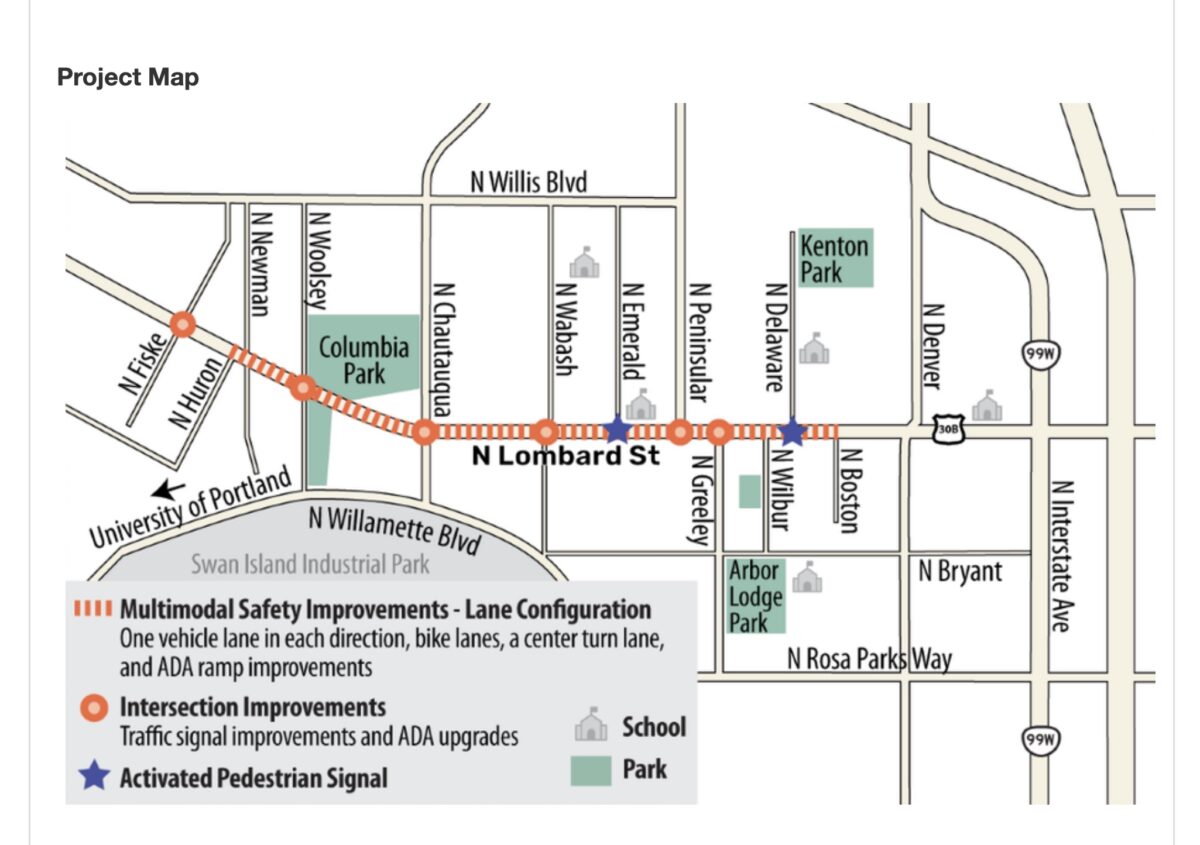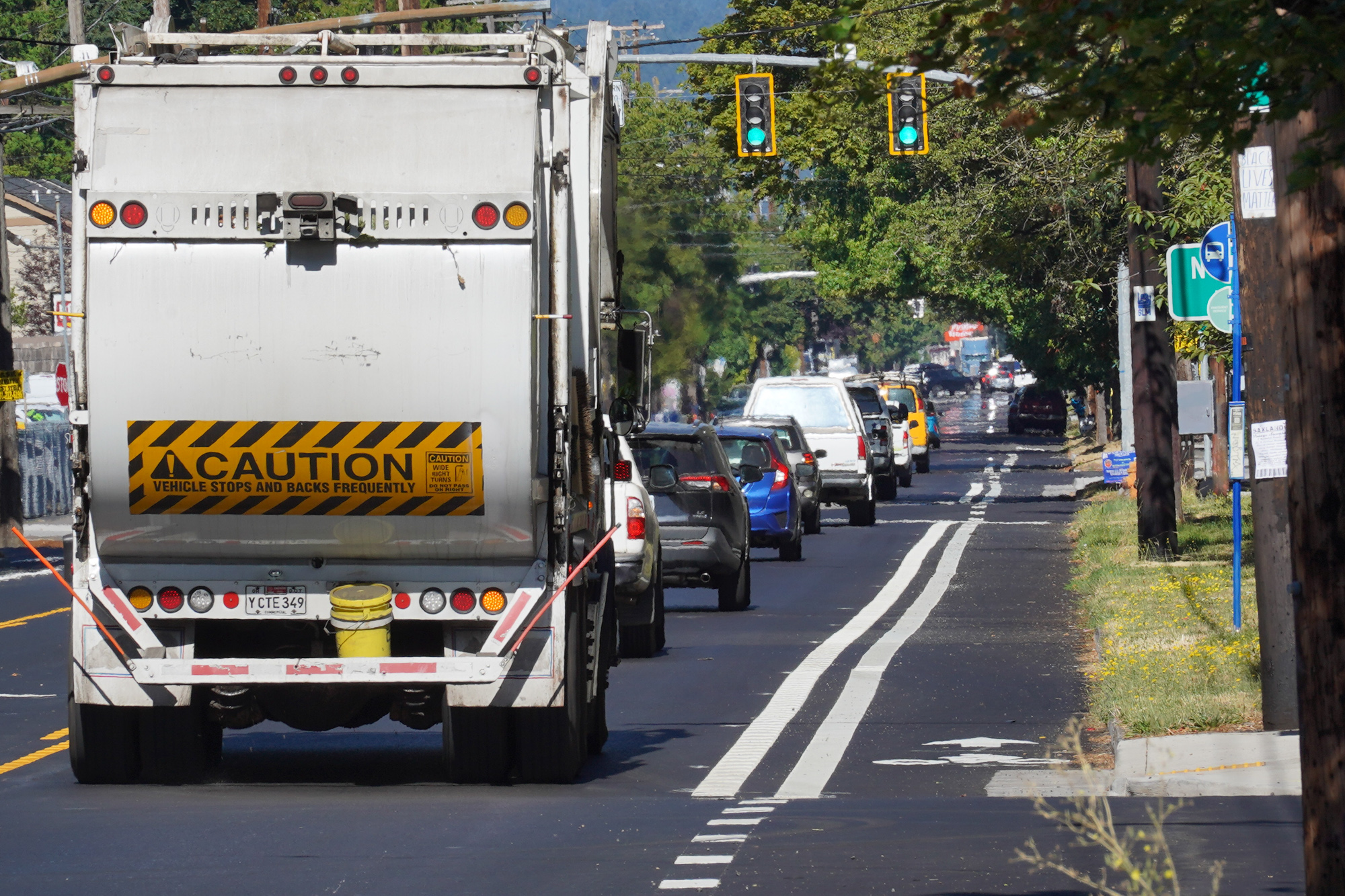

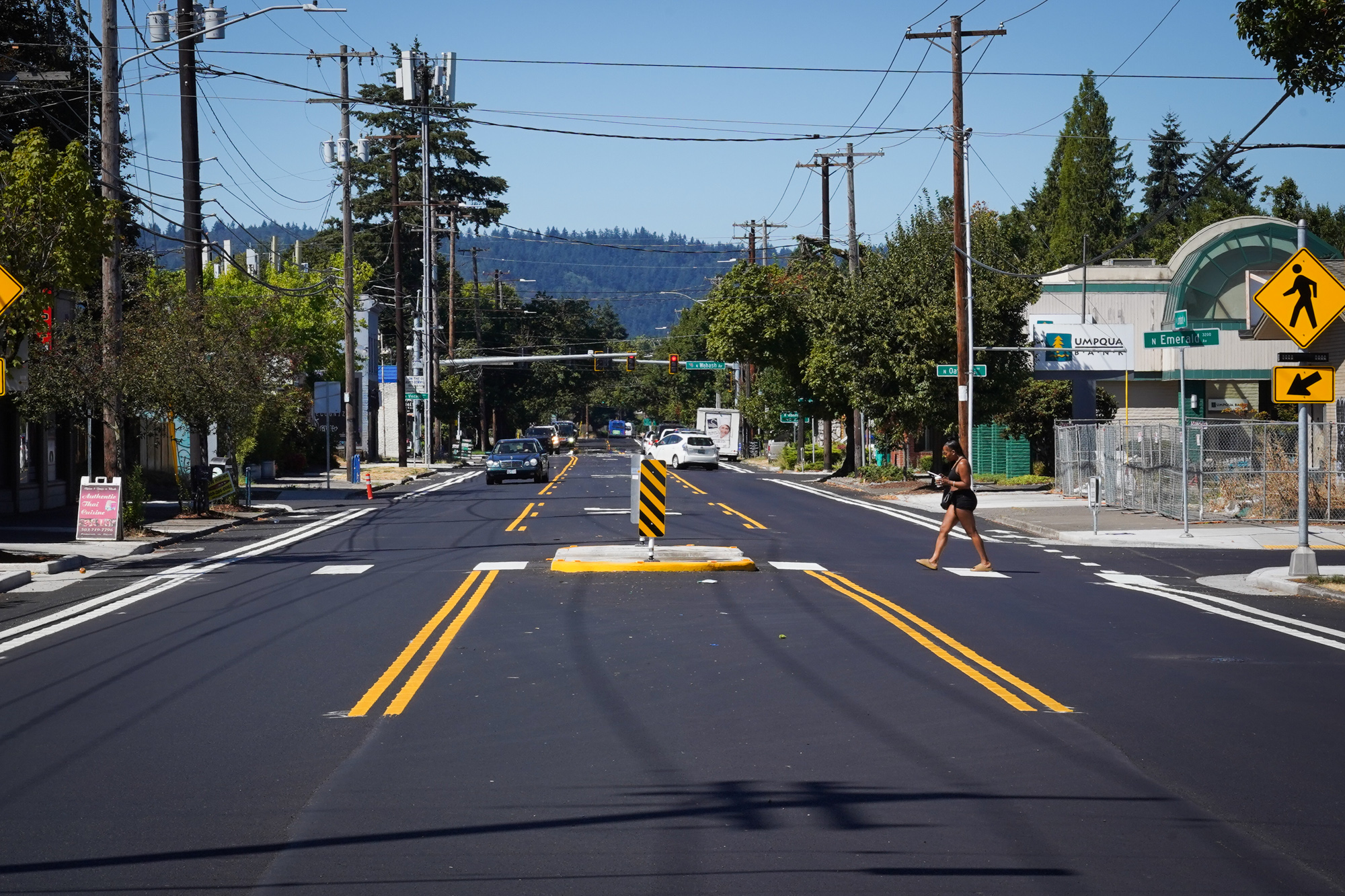
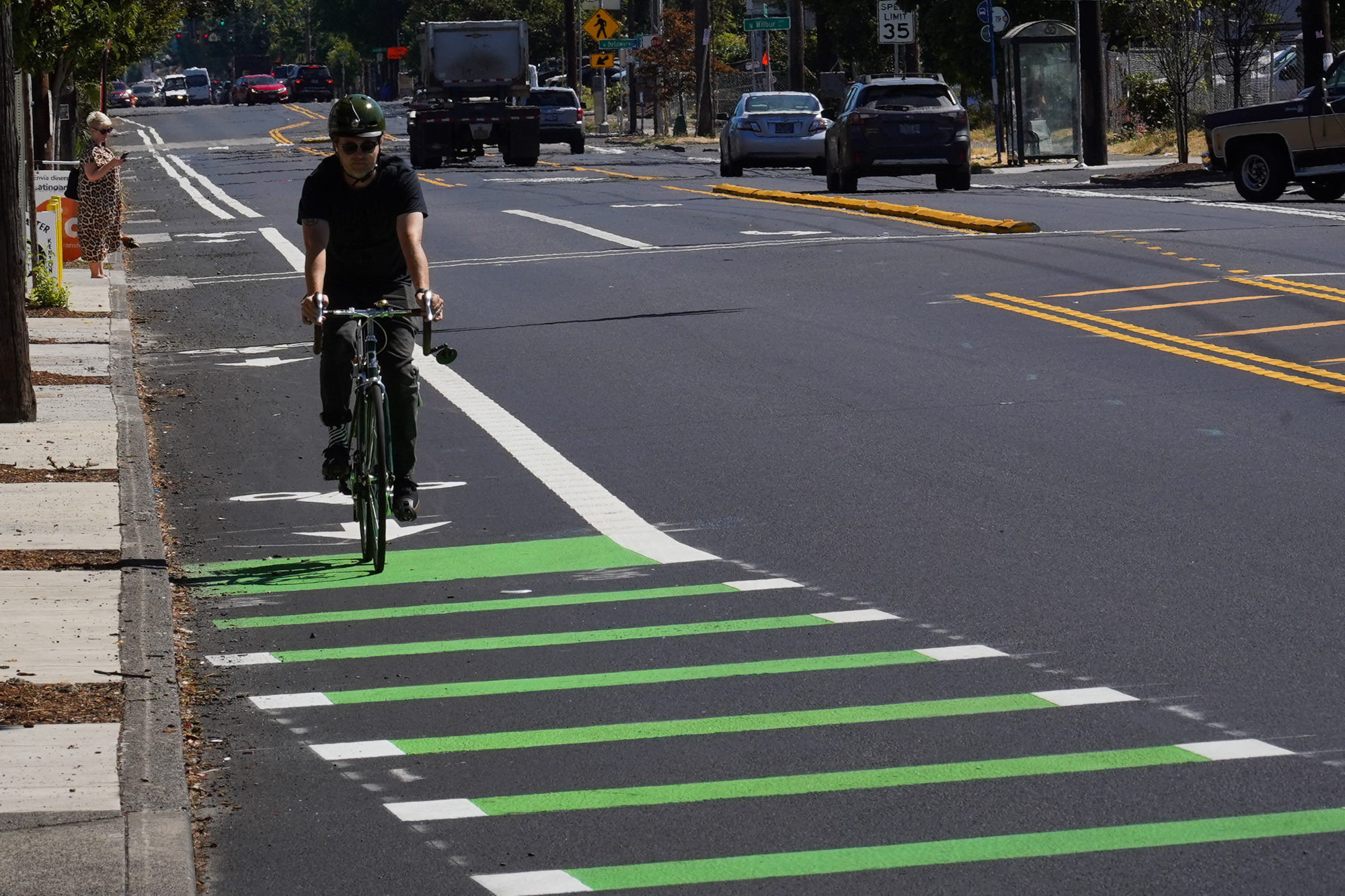
The Oregon Department of Transportation (ODOT) has completed a $16.5 million project on N Lombard Avenue that reduced space for driving and added a buffered, unprotected bike lane.
The Lombard Multimodal Safety Project stretches about 1.2 miles from N Fiske (west of Columbia Park) to N Delaware. In addition to new bike lanes the project repaved the street, upgraded ADA ramps, added new signals, added crossings with flashing beacons and medians, and more. ODOT found space for the bikeway by putting Lombard on a road diet in some sections. Instead of the previous cross-section of four general purpose lanes and a wide shoulder and/or parking lane, the new cross-section has two general purpose lanes, two bike lanes, and a center turn lane.
Since Lombard is also a U.S. Hwy 30 bypass and freight route, ODOT widened the general purpose lanes to 12 feet. The new bike lane is seven-feet wide (including the one-foot buffer). The speed limit is posted at 25 mph.
This project is the third time in recent years ODOT has added bike lanes to Lombard. In 2015 they striped from N Ida across the railroad cut to N Wall (leaving a glaring gap across the railroad overpass). Then in 2017 they striped a bike lane from Wall to Portsmouth. These are all nice steps forward, but the quality of the bike lane and several key gaps leave us with a head-scratching, relatively low-quality cycling experience that isn’t likely to change travel behaviors among most people.
These newest lanes are almost a dozen blocks east of where the bike lane ends on Portsmouth. And it’s another 10 blocks or so east of where they end at Delaware to the existing bike route on N Denver Ave. The gaps are a bummer, but when you consider that these bike lanes just unceremoniously end and plop (perhap unsuspecting) bike riders into a stressful, shared-lane environment is a real safety concern.
As for the bike lanes themselves, they are a welcome step in the right direction. To have dedicated cycling space on a major street like Lombard through a section loaded with important destinations like churches and parks and businesses is a very big deal. I rode them back and forth several times on Tuesday morning and — while I prefer physical protection — I felt like I was finally welcome.
It’s very unfortunate the bike lanes have no physical separation except for very tiny bumps every few feet. For some reason ODOT is reluctant to physically protect their bike lanes. When PBOT added concrete curbs and candlestick wands to N Rosa Parks Way in 2019, ODOT demanded their section over I-5 remain unprotected and they even narrowed the bike lane. (I’ve asked ODOT why they don’t protect bike lanes and will update this story when I hear back.)
The smooth new pavement was nice (although they’ve left a lot of sewer access covers full of loose gravel!) and driving speeds already seemed slower than usual. If there’s any truism to road design, it’s that less space for driving equal lower speeds. The fact that folks no longer have a way to zoom around slower drivers is huge.
It’s just too bad that ODOT holds their bike lanes back from reaching full potential. I’ve mentioned the remaining gaps and the lack of separation, but just as problematic is the amount of debris that collects in the lanes. Curbside bike lanes on high-volume arterials always have a lot of trash, car shrapnel, gravel, leaves, and so on piled in them. We must have ironclad plans for regular maintenance on the bike lanes or people won’t use them.
I saw just as many people riding on the sidewalks instead of the bike lanes while I was out there. And the presence of debris is a big reason why. One person I spoke to put it this way: “The new bike lanes may seem like a great idea, but there’s just glass everywhere, right where you would be riding your bike.” This person said they’ve gotten 4-5 flats riding in the shoulder and that expense and hassle has led him to being a sidewalk-cyclists from now on.
There are two other notable elements of this project: The new crossing treatment at Delaware and the mixing zones at Peninsular.
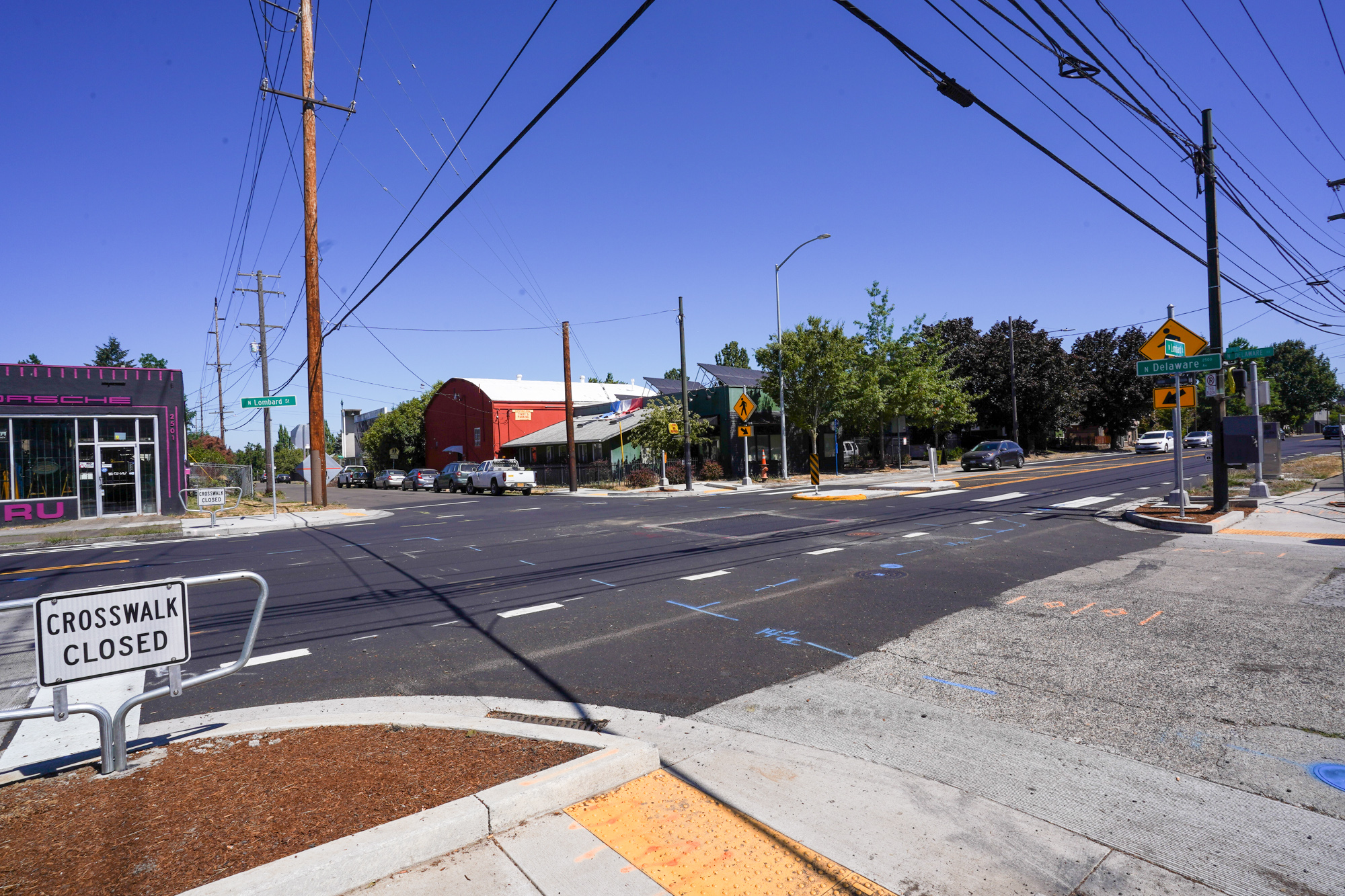

I’ve gotten three emails from concerned people (all of them moms who ride with kids) about how ODOT has changed the crossing at Delaware. This is a very important north-south bike route with two schools (Portland Village and Chief Joseph Elementary) just a few blocks away. Previously there was a half-signal (for Lombard traffic) and a marked crosswalk on the east side of the intersection. There was a beg button to activate the signal for bike riders in both directions.
Now the half-signal has been removed and in its place is a median island crossing with a rapid flashing beacon. This is nice, but it makes the intersection worse for biking in some ways. For northbound bike traffic, the beg button is now further away and requires folks to re-position up a curb ramp and into a narrow sidewalk space to use the crossing. But the changes southbound are worse.
Reader Emily W wrote in to say:
“What I find problematic is the beg button has been disengaged. To cross going south you have to [cross over both lanes] get on the (east) sidewalk, find the pedestrian button and cross in the crosswalk. It is also really annoying and potentially unsafe as people turn onto Delaware headed north and bikes are crossing over headed south to get to a signal.”
And Kristin S. wrote:
“The pedestrian activated beacon at Delaware is a huge pain for cyclists, especially for longtail and box cargo bikes. It’s on the wrong side of the road if you’re headed southbound and have to dismount because of the way the ramp is cut, and cars don’t respect the beacon like they do a stoplight. Definite downgrade from what was there before.”
I’ve asked ODOT to clarify this location and will share an update when I hear back (see updates below!).


The other notable section is the busy few blocks between N Villard/Peninsular and N Greeley (the Walgreens/Green Zebra area). The bike lane loses its buffer here as you go west approaching Peninsular and then turns into a mixing zone where you get a shared-lane environment with other road users. Westbound, the bike lane merges in a similar way. Just like the City of Portland does, there’s green color to signify a potential conflict-zone. This treatment is done to avoid the risk of right-hook collisions when curbside bike lanes come to intersections with a lot of right-turning drivers.
I felt OK in these sections, but my experience is not typical of everyone.
Overall, I’m happy to see bike lanes on Lombard, but ODOT needs to do more to make them fully functional to more people by filling more gaps, keeping the lanes free of debris, and adding protection.
What do you think? Will you ride on Lombard now?
Check the full gallery below (you can now click or swipe (on mobile) through our galleries if you hadn’t noticed yet):
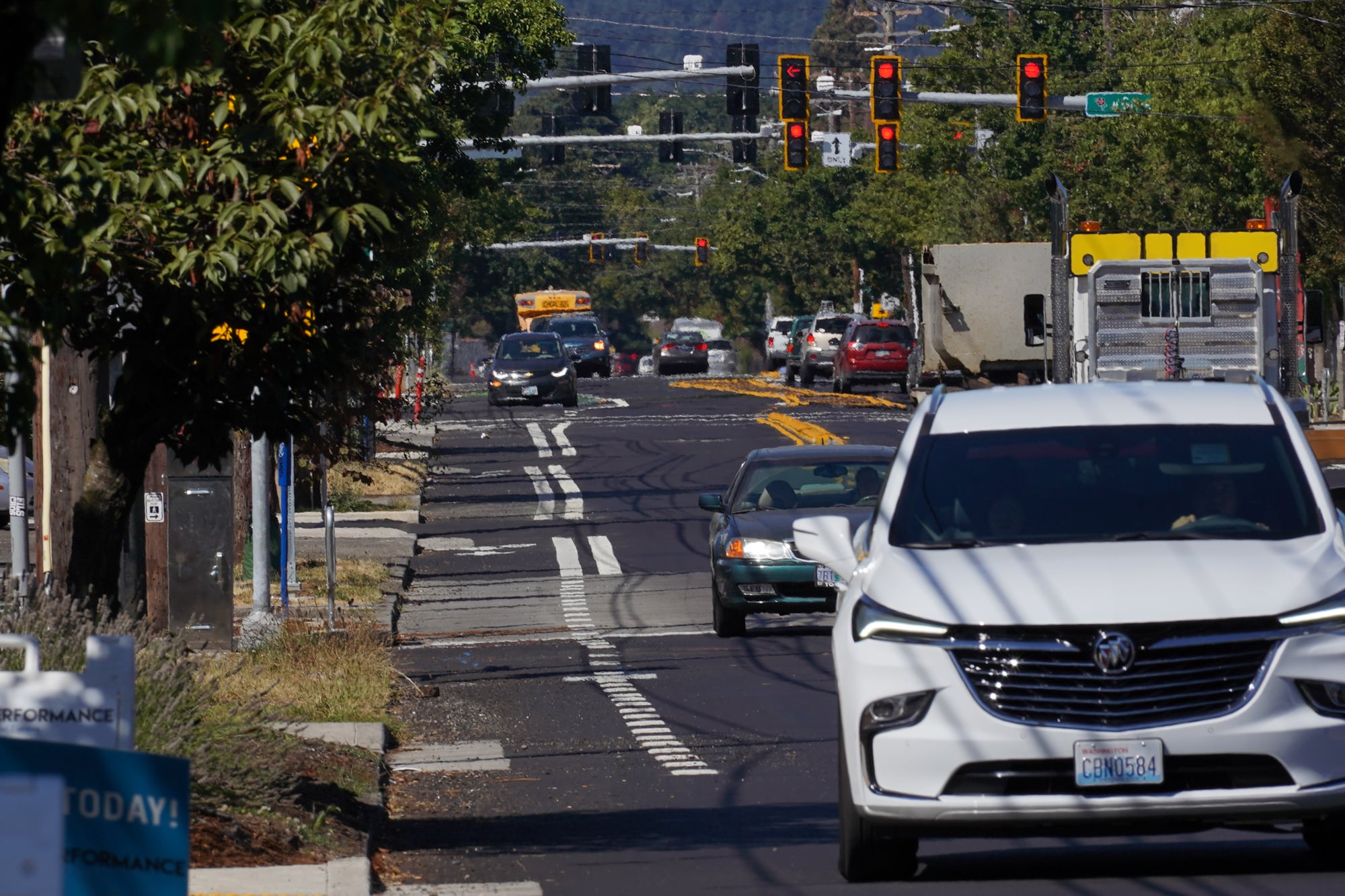
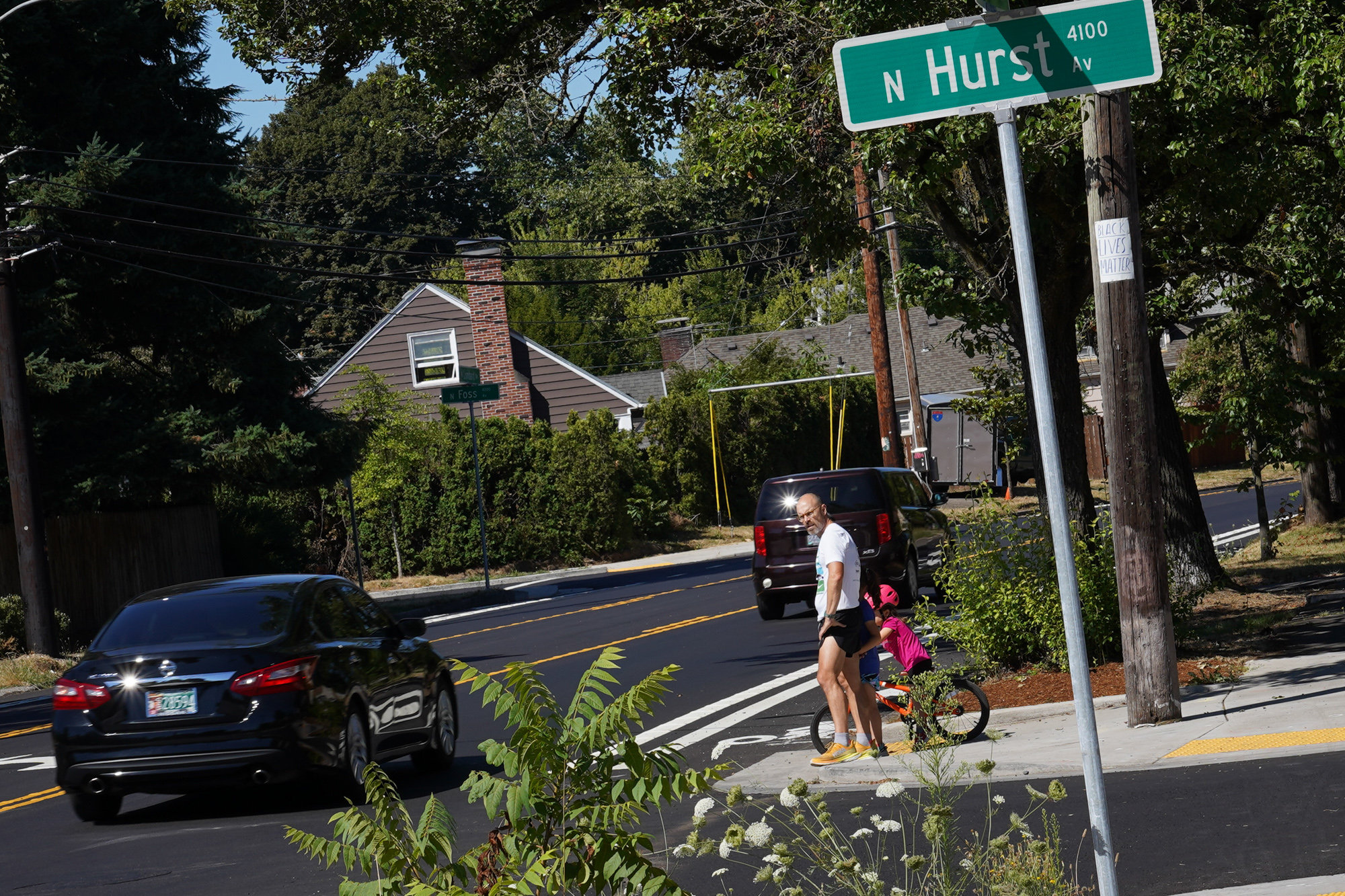

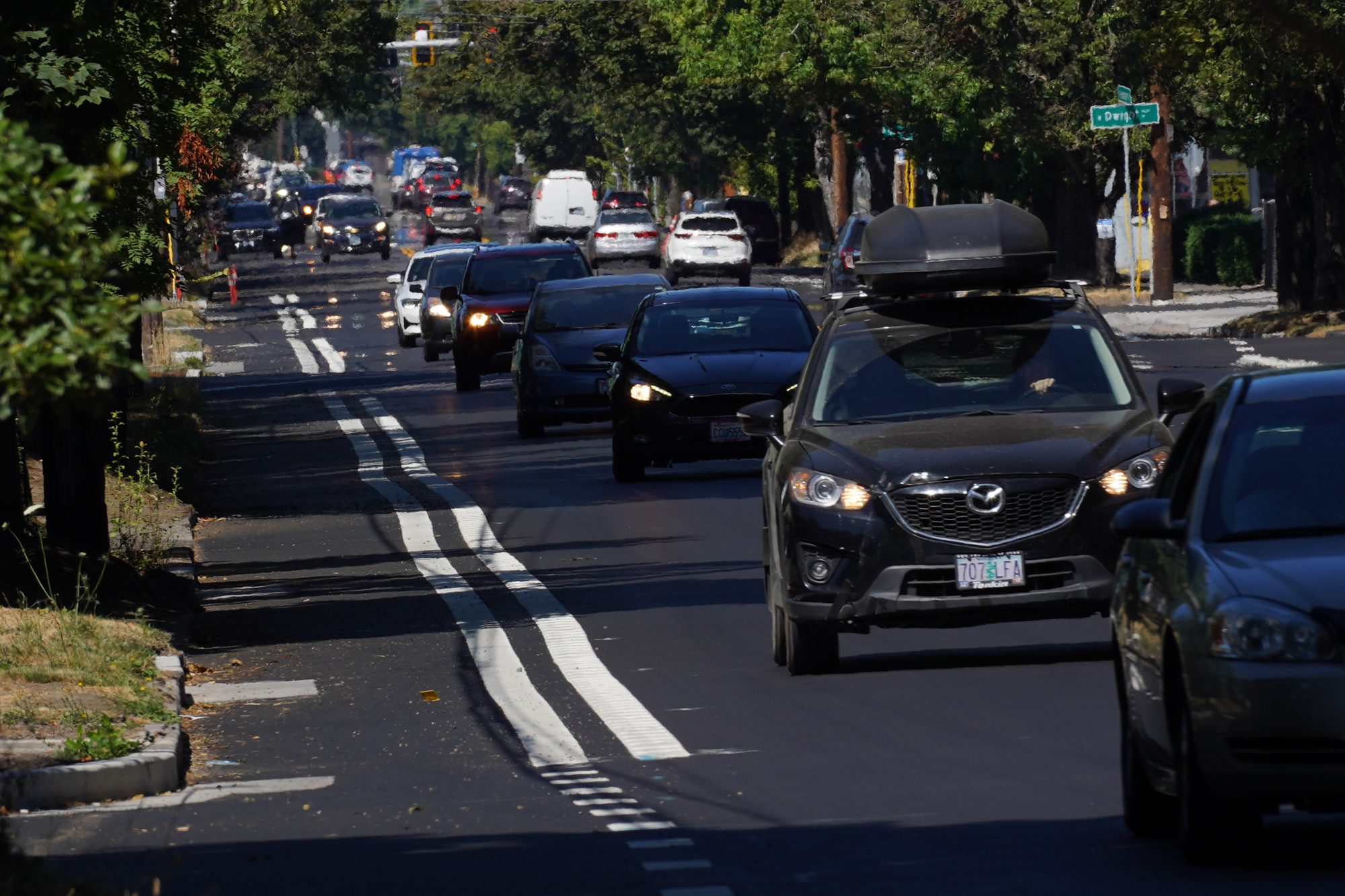
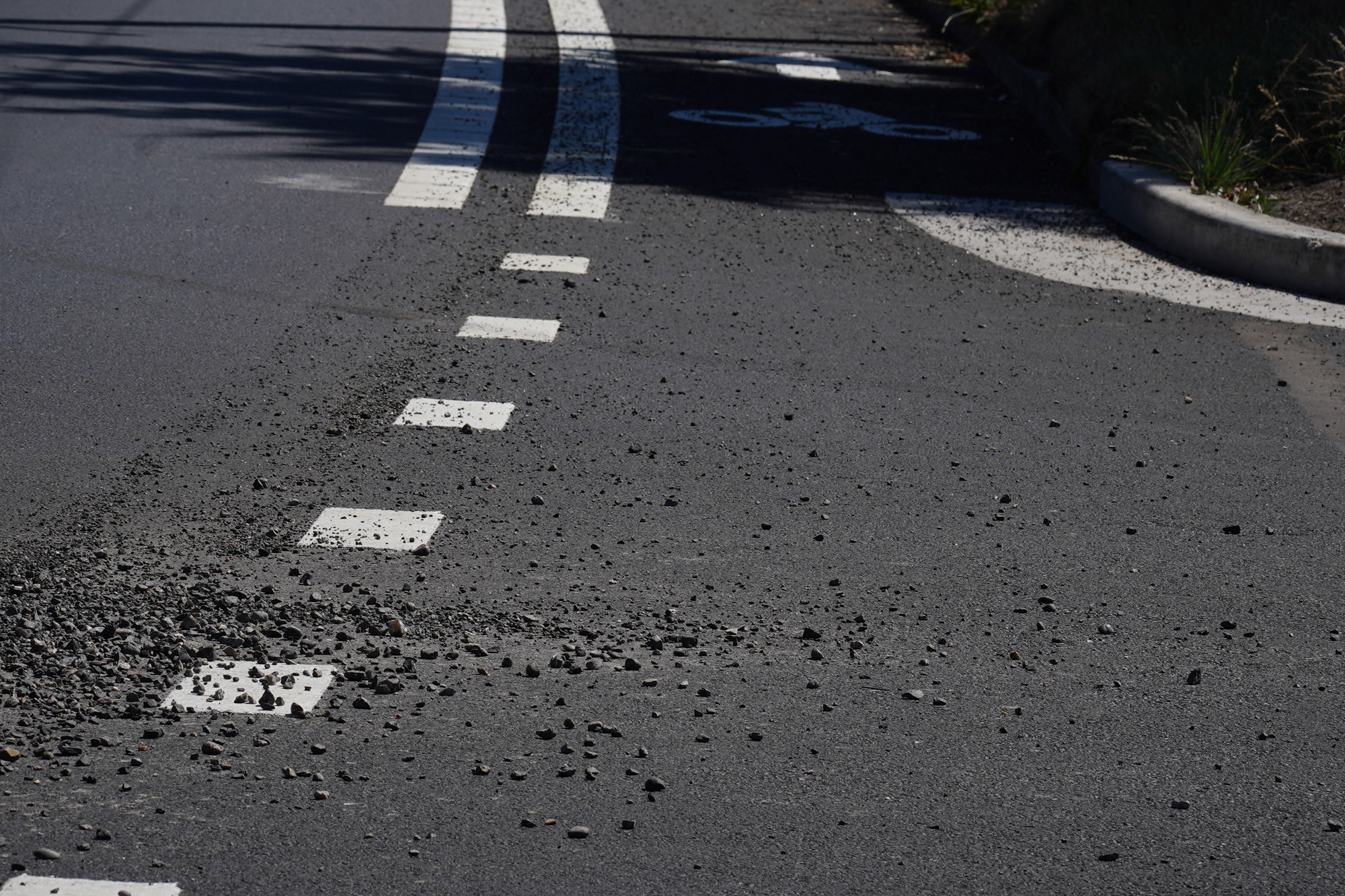



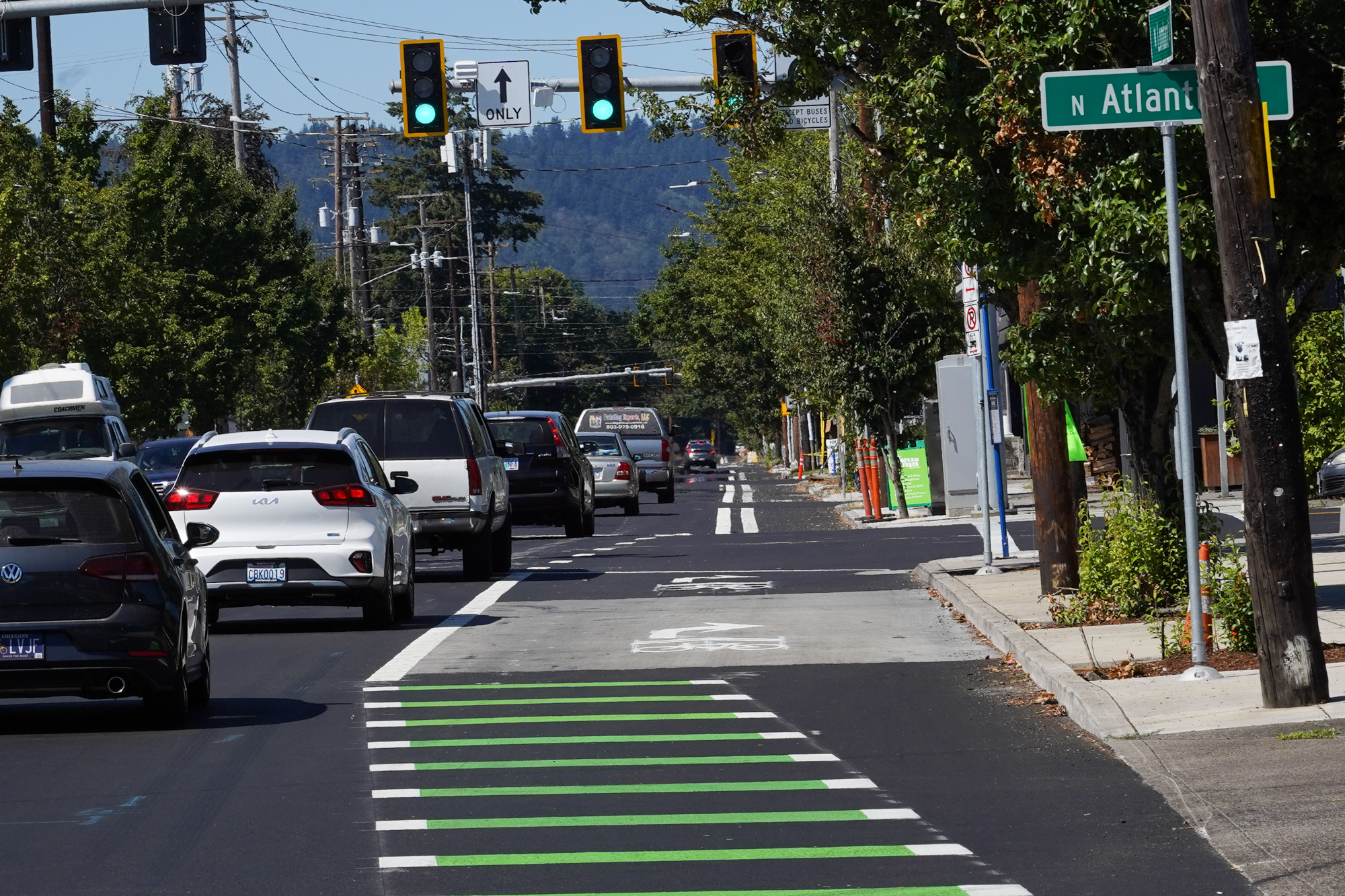



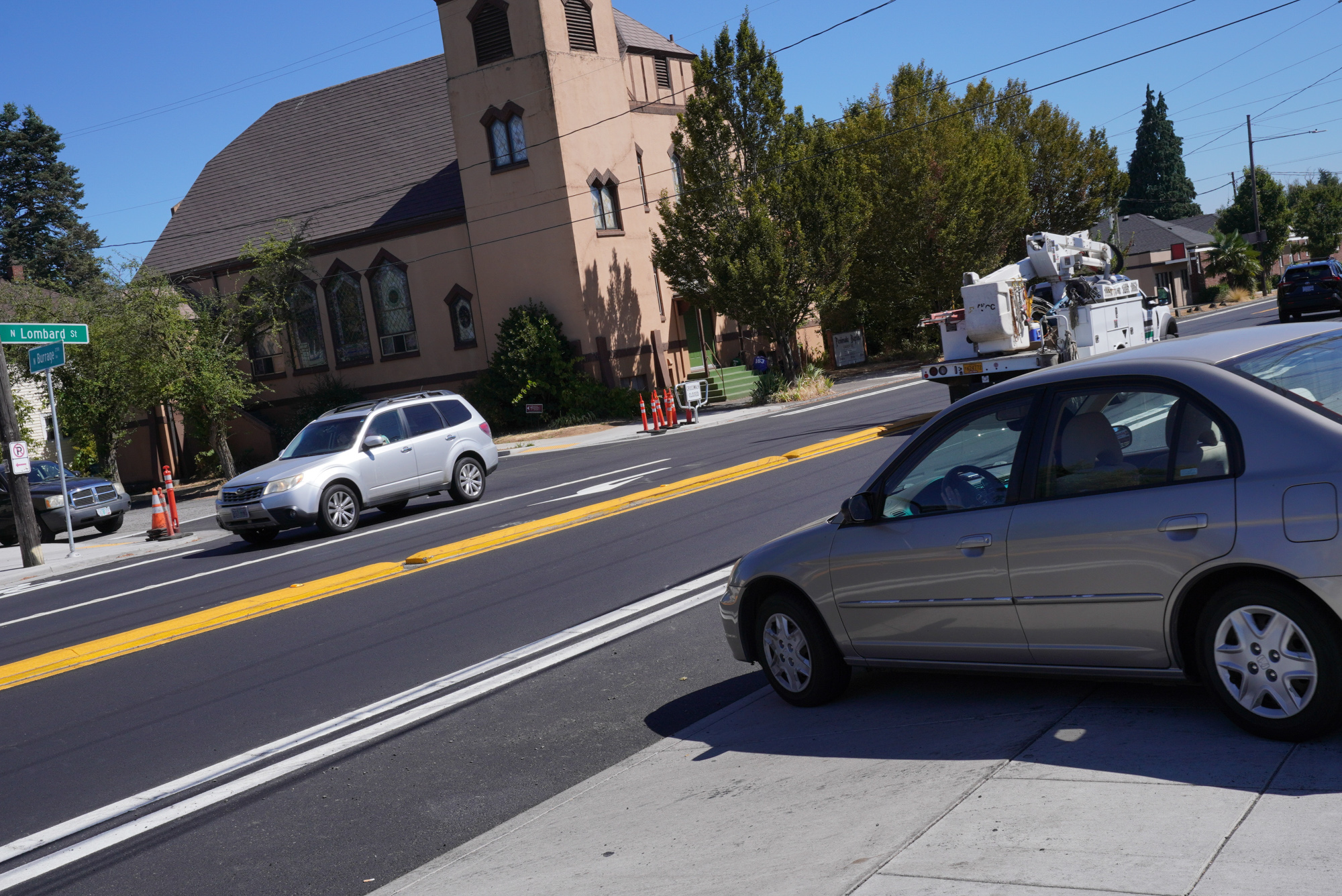
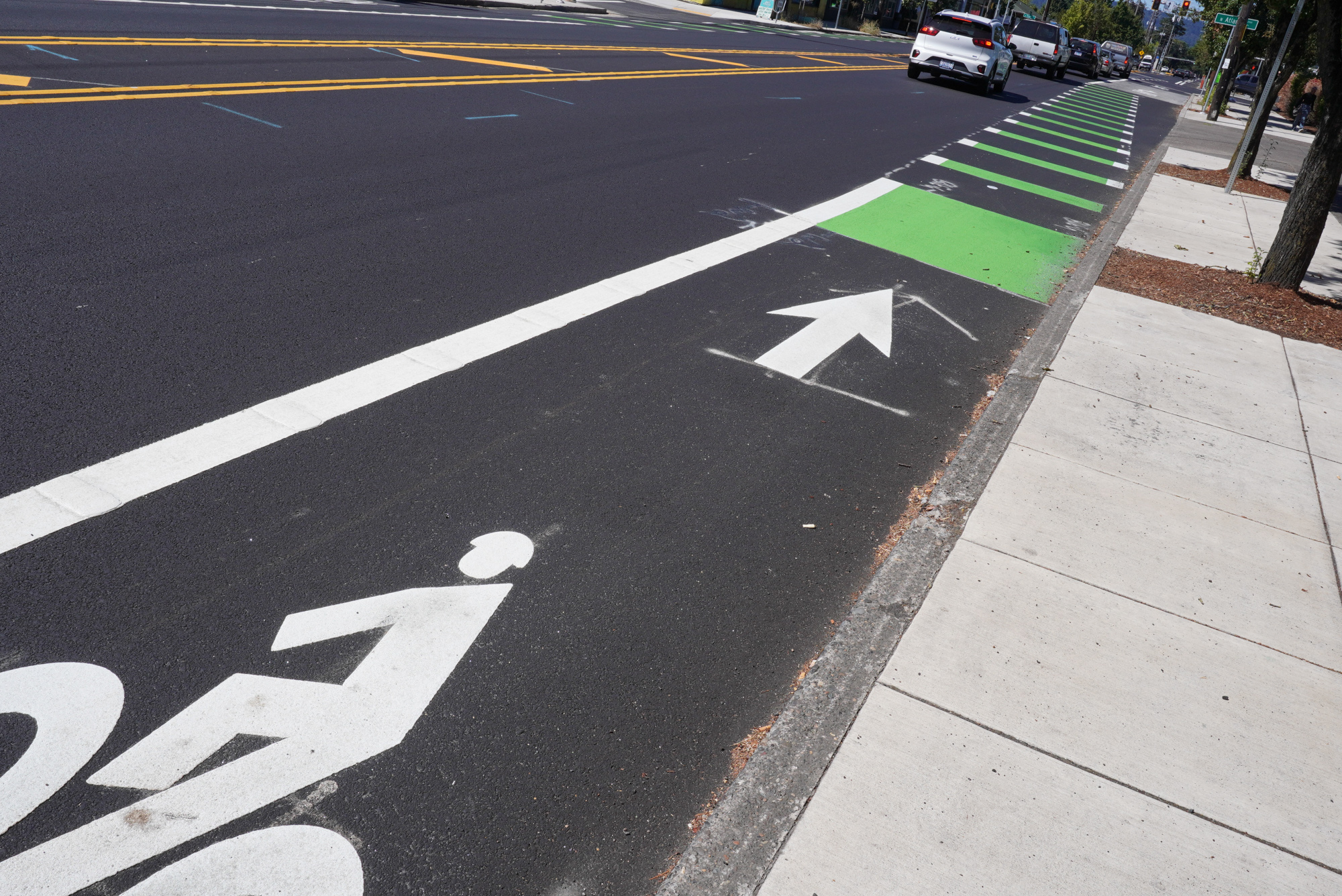
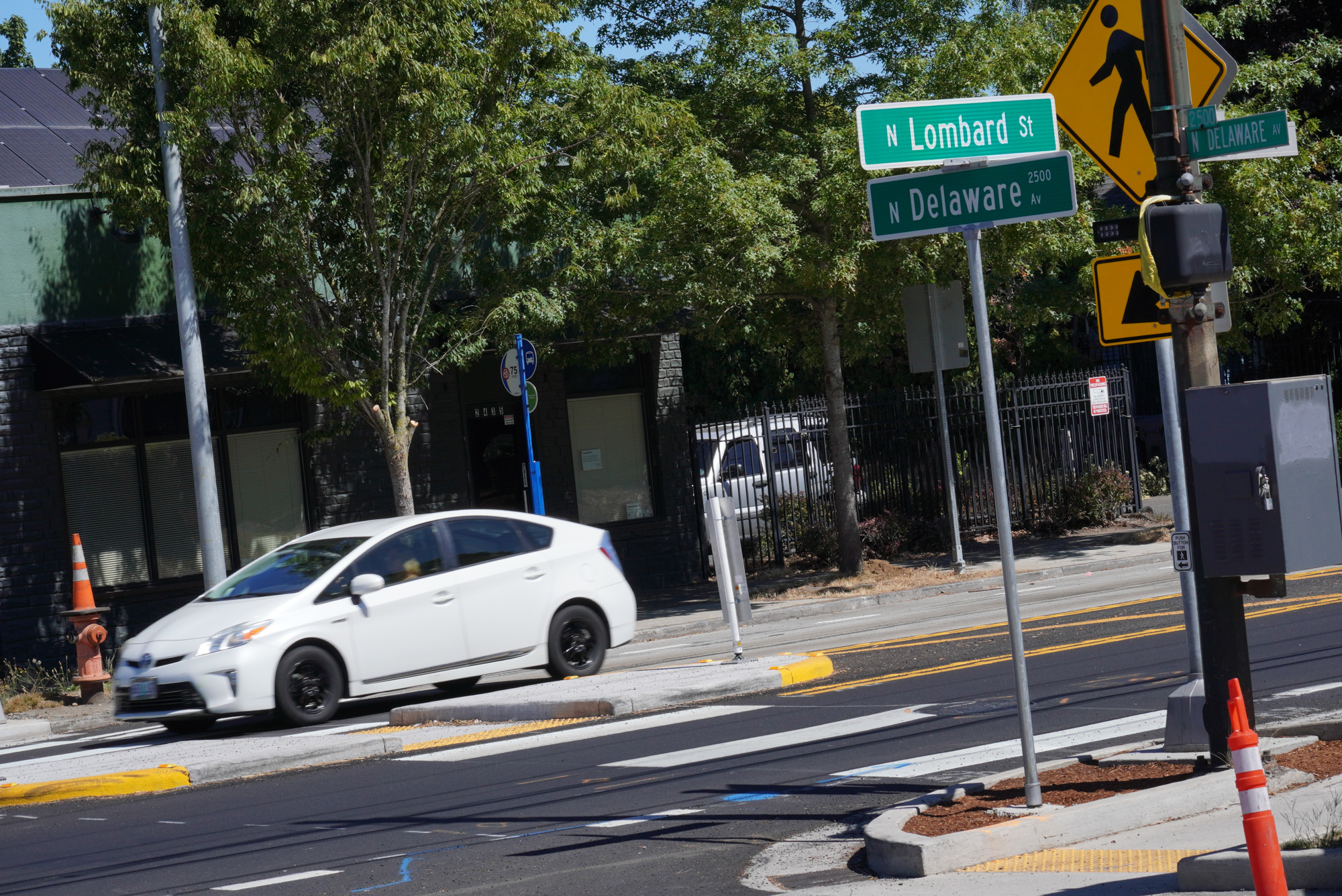
UPDATE, 2:30 pm: I’ve heard back from ODOT about the lack of physical protection and the Delaware crossing changes.
Here’s what Region 1 Public Information Officer Don Hamilton relayed about the bike lane design:
BikePortland: Why does ODOT not place plastic curbs or candlesticks in the buffer zone like PBOT often does, in order to make these bike lanes protected?
“The cross section of Lombard is limited and to install a plastic curb or candlesticks require more buffer space than what was available to ensure the devices installed can be maintained along with required shy distance to the vehicle/bicycle lanes. Lombard is also a freight route that requires a set amount of horizontal space to be provided for when larger loads have to use this road and installing curb/candlesticks would physically restrict that access.”
BikePortland: Can you clarify what bike riders are supposed to do to cross Delaware?
Southbound or northbound bike riders would need to either treat the Delaware approach like a vehicle or a pedestrian. They can use the stop control like a vehicle which will be easier to gauge now that the highway has been changed to a 3-lane cross section to judge a gap or they can go to the marked crosswalk activating the RRFB system like a pedestrian to proceed across the marked crosswalk.
Why was the traffic control method changed at Delaware?
— The age of the signal equipment means that it might simply not have enough slack in the wires or space in the conduits to move or add wires.
— The signal equipment is attached to utility poles, which does not have engineering specifications. We simply have no way of knowing if adjusting the signal heads would have a detrimental impact to the structural capacity.
— The signal heads are smaller than modern signal heads and they really should be replaced with larger ones to both meet federal standards and be more visible to drivers. However larger signal heads are heavier and would have the same issue of structural capacity as noted above.
— “Half-signals” are no longer permitted by federal standards and are expected to be removed whenever possible.
— Half-signals are noted to increase confusion and crash risk as drivers on the side street have different expectations to drivers on the mainline. In addition, since they rarely turn red, most drivers get used to the light being green and are more likely to run the red light, further increasing crash risk.
— To have a traffic signal at these locations would mean building a brand-new full traffic signal. In addition to funding difficulties from the project, these locations do not have enough traffic volumes to meet signal warrants as laid out in the MUTCD. At a rough estimate, the traffic volumes would have to be 3-4 times higher on the side streets during the peak hours to even come close to meeting the volume-based signal warrants.
— MUTCD link (https://mutcd.fhwa.dot.gov/pdfs/2009/mutcd2009edition.pdf ). Signal Warrants start on page 436.
— Though the existing signals can’t be modified to fit the project and new signals aren’t appropriate or cost-effective, we still wanted to provide an enhanced crosswalk for pedestrians. The main features of the project (reducing the number of through lanes and providing a median) make it easier for pedestrians to cross even without further enhancements. Pedestrians will have fewer conflict points to negotiate and they will have a place to wait so they don’t have to make the crossing in a single movement. Providing an island, a high visibility marked crosswalk, lighting, and an actuated beacon further enhance the visibility of pedestrians crossing at these locations.
— RRFB’s have been shown to be highly effective at getting drivers to stop for pedestrians. The rapid flash is attention grabbing unlike a traffic signal which rarely turns red and therefore is often ignored. In attention, it requires pedestrians to look that vehicles have stopped before crossing. Signals sometimes give a false sense of protection and pedestrians may cross before ensuring that it is safe to do so.

